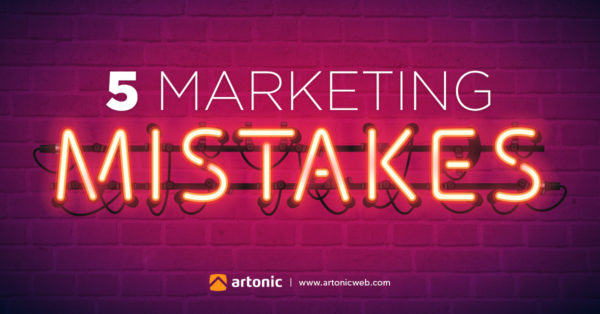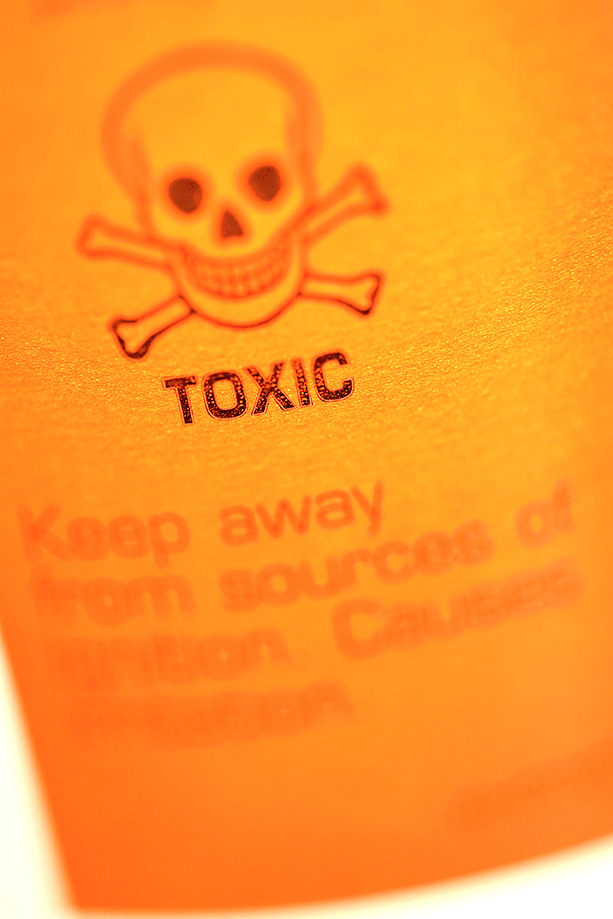Whether or not there is such a thing as bad publicity is up for debate. But bad marketing practices are alive and well, and they could be lurking in your campaign. What’s at stake? Only your reputation and your bottom line.

From your business logo, to your website, to your social media activity, your company’s image and reputation are tied to your marketing efforts. But if your business plan includes one these 5 marketing mistakes, it could be driving away customers instead of attracting them. What should you avoid? Start with these frequent offenders:
1. Bargain-Basement Branding
Ask 50 marketing gurus to define branding, and you’re likely to get 50 different definitions. Branding – in its broadest business sense – is creating an identity for your business. The elements of branding can be as large as a major advertising campaign, or as small as how someone answers the phone. But for the purpose of this blog, we’ll focus on a company’s logo.
A lot of good things have come from the Internet. Stock images aren’t necessarily one of them. Stock images have their place in supporting your content, but too many businesses rely on them for their logo. A business’s logo should look great, stand out from the competition, boldly go where no logo has gone before. Hire a professional artist or agency and make it memorable, in a good way.
2. One-Size-Fits-No-One Websites
What is the first thing customers see after your logo? Probably your website. In the digital era, your website is the first impression your company makes with potential customers. It projects your business’s image, voice, and personality. Your website should be unique and impactful, but that’s just not going to happen if it’s made using a cheap template.
Lots of marketing companies are offering low-cost website design to entice customers into signing on with them. Not surprisingly, their customers get exactly what they pay for: a one-size-fits-no-one of site that looks and sounds suspiciously like all others produced by their marketing company.
True, there are basic components every good website should have:
- A clean, modern design
- Easy navigation
- Valuable, well-written content
- Professional-quality pictures and videos
But beyond that, it should have a unique look and character. It’s your digital spokesperson, your cyber sales staff – and as such, it should be professional, unique, and engaging. It should show and tell customers exactly what you’d want them to know, as if you were making the sales presentation to them in person. Go the extra mile and have your website created by a company who specializes in website design; it’s worth every penny.
3. The Dark Side of SEO
What’s in your SEO (Search Engine Optimization)? If you don’t know, or if it relies on questionable tactics, your SEO could be contaminating your marketing campaign. SEO refers to the words and links that direct people your website, blog, or landing page. When used correctly, they rank your business higher on search results than your competition. But when they’re misused or abused – as is often the case with marketing firms offering quick SEO results – your business can be slapped with rank-plummeting penalties by the major search engines.
The most nefarious Dark-side SEO tactics are:
Duplicate content – Non-unique content is not good for SEO. Don’t repeat throughout your website. If you must have repetition, make sure these pages are marked “no index, no follow.”
Keyword stuffing – Repeating the same keywords just to optimize your copy is a very bad SEO practice. It will turn off readers and send up a signal to search engines that you are trying to manipulate their algorithms. Mentioning your keywords in the title, description, opening paragraph and a couple of more times (naturally) in the text is enough.
Guest posting on low-quality websites for links – Links are an increasingly important ranking factor for search engines, but they must be high-quality links. If you’re guest posting on a low-quality site just for the links, you’re not just wasting your time, you’re damaging your online reputation.
Accepting low-quality guest posts – Likewise, accepting low-quality guest posts for a reciprocal link is a bad marketing move.
Paid links – Don’t even think about it. You’re wasting your money and you’ll be penalized with lower rankings.
Too many outgoing links – Websites that have a lot of outgoing links without using the “nofollow” tag can be considered as link farms or paid directories. If you’re not 100% sure that you’re linking to a reputable source, mark it with a “nofollow” tag.
Cloaking/invisible text – Once the go-to tactic for black-hat SEO, cloaking (hiding the real destination of a link) and showing different versions of a page to crawlers and users will red-flag your site with all the search engines.
Too many ads above the fold – Your website isn’t a NASCAR entry. Minimize ads, especially above the folds, or you’ll lose readers and gain penalties from the major search engines.
Developing a solid, organic SEO program takes time, typically 4-6 months. If a company is promising you quick SEO results, start looking for the nearest exit.
4. Social Media Snafus
Social media channels can have a huge impact on your marketing strategy. When used correctly, they can help you create a loyal fan base that’s not afraid to tell the world how much they love your business. But when they’re not, customers will tune out. Here a few tips to keep your social media posts socially acceptable.
Don’t overshare. How often you should post on social media is up to you, but an average social posting schedule for a business would look something like this:
- Facebook: Don’t post more than 2x per day. After that, engagement begins to drop off.
- Google+: Post up to 3x per day. But be consistent or traffic will decrease.
- Twitter: Post up to 3x per day – engagement slightly decreases if you post more often.
- Pinterest: Post up to 5x per day
Don’t try to be everywhere. Periodically examine your social media engagement and focus your efforts on where they’re making the most impact.
Don’t mistake social media for direct advertising. Engage your customers and fan base, don’t sell to them. In other words, you need to create content that your audience wants to share and discuss.
Don’t ignore complaints. If a complaint about your business pops up on your social page, address it – politely, professionally, and immediately! A timely, positive response could turn a complaint into a lifelong, loyal customer.
Don’t get too personal. Keep your posts friendly, but professional.
Don’t get hung up on hashtags. One to three hashtags per post seem to be the magical numbers for optimum engagement. While we’re on the subject, hashtag responsibly. Read other tweets so you can understand the origin of a hashtag before you attach it to any marketing or branding messages or you could be in for a shock!
5. The Company Snoozeletter
Not to be confused with the company newsletter, the snoozeletter is rarely read, or even opened. You’ve seen them – the company newsletters with dry, prefabricated content that readers don’t really care about. Or the ones with too much personal content that readers also don’t care about. A good – dare we say, interesting – company email provides a perfect blend of news and information that entices readers to learn more.
What’s the recipe for a readable newsletter?
Start with an intriguing subject line, one that makes the reader want to keep reading. If your subject line reads “June Newsletter,” you might as well have titled it “Read This If You’re Ready for a Nap.” Change it to something like “Have You Seen What’s New?”, and you’ll get a much higher open rate.
Add focus to your newsletter. Don’t piece together topics like a patchwork quilt. Focus on a primary topic, and use other pieces support it. Maybe your rolling out a new product – that’s your main article. But add sidebars about how it stacks up against competitive products, where you might be showing or demonstrating it, special incentives, you get the idea.
Stir in the WIIFM (What’s in It for Me) factor. Newsletters aren’t a direct sales tool, but they can still have an effect on your bottom line. Put yourself in your customer’s shoes and ask, “What’s in it for me?” when writing your articles; use your news to boost customer engagement.
Serve with a personalized greeting. If it’s not in the newsletter itself, put it in an email and add the email as an attachment. Customers want to know you remember their names.
Conquer the Web
Is your business ready for a marketing makeover? Conquer the Web – and marketing mistakes – with Artonic!






